 | James Bates Thomson - Arithmetic - 1849 - 438 pages
...12 hours? 604. To find the common difference, when the extremes and the number of terms are given. Divide the difference of the extremes by the number of terms less 1, and the quotient will be the common difference required. OBS. The truth of this rule is manifest... | |
 | Benjamin Greenleaf - Arithmetic - 1850 - 346 pages
...quotient will be the common difference. Thus, 27 -T- 9 = 3, the common difference. Hence the following RULE. — Divide the difference of the extremes by...and the quotient is the common difference. EXAMPLES FOB PRACTICE. 1. The extremes of a series are 3 and 35, and the number of terms is 9 ; what is the... | |
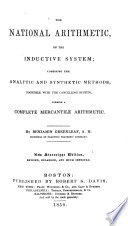 | Benjamin Greenleaf - Arithmetic - 1850 - 368 pages
...differences, the quotient will be the common difference. Thus 16 -5- 8 = 2 is the common difference. RULE. — Divide the difference of the extremes by...less one, and the quotient is the common difference. 1. The extremes are 3 and 45, and the number of terms is 22. What is the common difference ? OPERATION.... | |
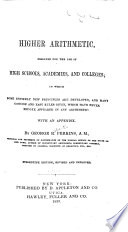 | George Roberts Perkins - Arithmetic - 1850 - 356 pages
...the first term, the last term, and the number of terms, to find the common difference, we have this RULE. Divide the difference of the extremes by the number of terms, less one. EXAMPLES. 1 . The first term of an arithmetical progression is 5, the last term is 176, and the number... | |
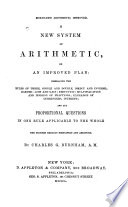 | Charles Guilford Burnham - 1850 - 350 pages
...238. — When the extremes and number of terms are given, to find the common difference, we have this RULE. Divide the difference of the extremes by the number of terms less 1, and the quotient will be the common difference. 7. If the first term of a series be 3, the last... | |
 | Roswell Chamberlain Smith - Arithmetic - 1850 - 314 pages
...•*- 5= 5 years, the common difference. A. 5 years. 1 1 . Hence, to find the common difference, — Divide the difference of the extremes by the number of terms, less 1, and the quotient will oe the common difference. 12. If the extremes be 3 and 23, and the number... | |
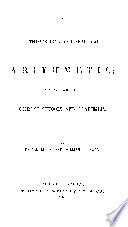 | Daniel Leach - Arithmetic - 1851 - 280 pages
...found. 312. To find the common difference when the two extremes and the number of terms are. known,-— RULE. Divide the difference of the extremes by the number of \ terms , less one , and the quotient will be the common difference. This rule may be represented by the formula, thus ; Let a— .first... | |
 | Arithmetic - 1851 - 260 pages
...and the last, or fifty-second, payment $1236 ? Ans. 32448. NOTE &. —To find the common difference, divide the difference of the extremes by the number of terms, less one. EXAMPLES. 1 The ages of 8 boys form an arithmetical series-— the youngest is 4 years old and the... | |
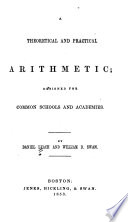 | Daniel Leach - Arithmetic - 1853 - 622 pages
...found. 312. To find the common difference when the two extvsmes and the number of terms are known, — RULE. Divide the difference of the extremes by the number of terms, less one, and the quotient will be the common difference. This rule may be represented by the formula, thus : Let or=first term,... | |
 | David Henry Cruttenden - Arithmetic - 1853 - 330 pages
...Ans. 6. CASE IV. 1. To find the COMMON DIFFERENCE, knowing the Extremes and the Number of terms. 2. RULE. Divide the difference of the extremes by the number of terms less by 1. 3. Thus, the extremes being 8 and 2258, the number of terms being 76 ; what will be the common... | |
| |